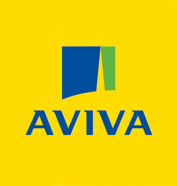Title Page
-
Date
-
Completed by
-
Location
-
To view our Loss Prevention Standard that supports this checklist, please view the following link : https://broker.aviva.co.uk/documents/view/aviva_laundries_lps.pdf
Laundry Checklist
-
1. Is the laundry building constructed from?<br> non-combustible materials?
-
2. Do the premises have fire segregation/compartmentation in respect of the following:<br>• Incoming areas?<br>• Outgoing areas?<br>• Plant rooms?<br>• Storage areas?
-
3. Are all fire exits/routes clear and unobstructed?
-
4. Is an automatic fire protection system installed?
-
5. Is an automatic fire alarm/detection system installed?
-
6. Do you have portable fire extinguishers to the following scale, which are regularly serviced and maintained?<br>• At least 1 x 9 litre water extinguisher to every 200m2 plus CO2 for use on electrical equipment<br>
-
7. Are automatic shutdown safety interlocks fitted in respect of:<br>• Fire shutters and conveyors?<br>• Drying tunnels/chambers - with timed shut down to allow traveling garments to exit the tunnel/chamber and prohibit entry?
-
8. In respect of incoming inspections, do they ensure that:<br>• A list of flammable solvents/combustible oils/greases which are used by customers is kept and is up to date?<br>• Flammable solvent impregnated garments are inspected prior to washing and after washing (soiled garments rewashed)?<br>• Flammable solvent/oil impregnated garments are washed separately and prioritized?<br>• Pockets of garments are checked and cleared?<br>• Rubber, foamed rubber or garments/sheets with water resistant coatings that include wax or oils are not placed into dryers?
-
9. Are hazard risk assessments up to date in respect of:<br>• Building fire safety?<br>• COSHH?<br>• DSEAR?
-
10. Are self-inspections regularly completed, e.g. housekeeping, fire and security?
-
11. Are boilers/steam generators:<br>• Serviced and maintained?<br>• In dedicated fire-resistant plant rooms?<br>• Fitted with automatic shutdown safety interlocks?
-
12. In respect of flammable liquids, is there:<br>• Safe storage/decanting arrangements in place and are the liquids used in accordance with Loss Prevention Council (LPC) or other national standards?<br>• Safe electrical systems for use in potentially flammable atmospheres?<br>• Restrictions on the quantities of machinery hydraulic oils used?<br>• Procedures to ensure that automatic shutdown safety interlocks are working and tested, where appropriate?
-
13. Are electrical/thermal imaging inspections, testing regularly undertaken and any faults or deficiencies promptly rectified?
-
14. Are electrical motors/machinery, e.g. conveyors, washers, dryers, ironers, folders:<br>• Clean, routinely serviced and maintained?<br>• Fitted with static electricity straps which are undamaged and regularly inspected?
-
15. In respect of the risks posed by fire/self-ignition, are: <br>• Drying temperatures monitored and controlled? <br>• Dryers fitted with automatic timed interlocked doors to allow cooling? <br>• Dried garments sufficiently cooled before folding and packing?<br>• Items of laundry not left in dryers? <br>• Dryers left open and empty when not in use? <br>• Mobile laundry containers constructed from metal and not plastic?
-
16. Are all extract hoods and ductwork:<br>• Regularly cleaned along the entire length of the duct as part of a scheduled cleaning programme?<br>• Fitted with inspection hatches along the length of the duct?
-
17. With regards to dust/fly:<br>• Is high and low levels dust routinely removed from structural steelwork and from the tops of cable trays and machinery?<br>• Are motors kept free of dust?<br>• Are dryers which generate fly and lint regularly extracted and cleaned, with such items removed each day from the building?
-
18. Arson: in respect of the external storage of combustible materials is:<br>• There a perimeter security fence with gates which are kept closed and are they all in a good state of repair?<br>• There a system to control access to the site and buildings to authorised persons only?<br>• Storage limited and kept 10 metres from buildings or two times the storage height whichever is the greater distance?<br>• An intruder alarm fitted to in accordance with national standards to protect the premises?
-
19. Are storage tanks:<br>• Kept separate and secured from unauthorised use?<br>• Double-skinned or provided with spillage containment to at least 110% of the total capacity?
-
20. With regards to vehicle movements are:<br>• Vehicles and pedestrians kept separate with dedicated routes, clearly signposted?<br>• There separate entrances and exits and car parking areas for staff and visitors which are kept separate from collection or delivery vehicles?
-
21. In respect of smoking:<br>• Is there a strict no smoking policy in place?<br>• Is there evidence of any illicit smoking?<br>• Are drivers and visitors informed not to smoke in their cars/cabs?
-
22. Is there an Emergency Site Response Team?<br>• Always on duty covering all shifts, sickness and holiday periods?<br>• With training programmes adequate and up to date?<br>• Which includes a Crisis Manager with agreed designated reporting lines and responsibility for calling the Emergency Services?<br>• Which has produced an Emergency Site Plan?<br>As part of the site response, is there a trained engineer on duty to assist the Fire & Rescue Service and to check sprinkler pumps are operating correctly?
-
23. Business Continuity Planning (BCP); has the site:<br>• Produced a formal BCP, which is reviewed, tested and updated at least annually?<br>• Ensured that copies of the BCP are on site in a protected fire safe with at least a 2-hours fire rating?<br>• Confirmed that copies of the BCP are held off site and available at all times?
Sign Off
-
Additional Comments
-
Completed by














